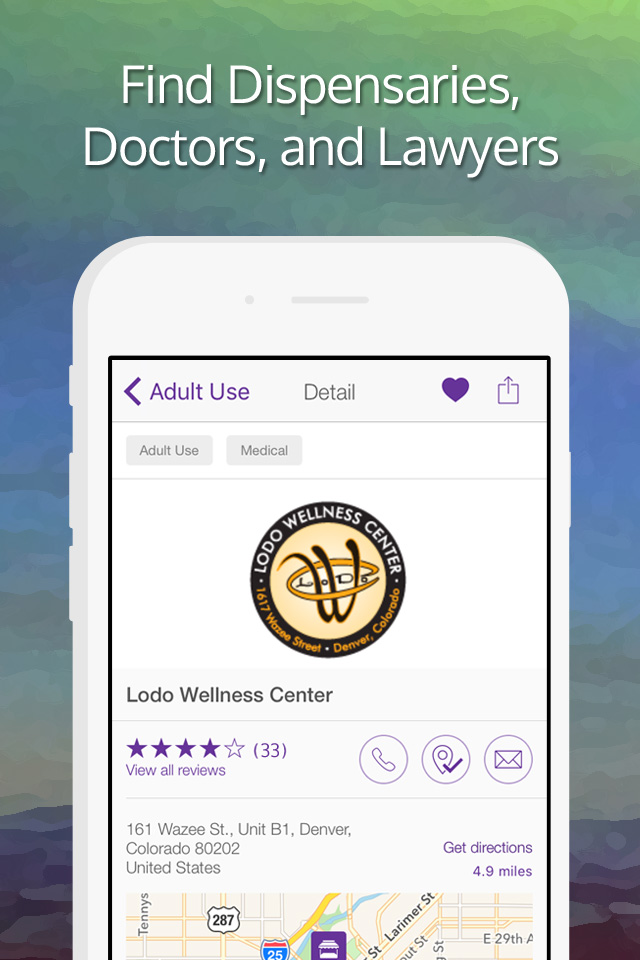Boosting Mental Acuity with Cannabis: Myths and Realities
Welcome to our article exploring the relationship between cannabis and mental acuity. In recent years, there has been growing interest in the potential cognitive enhancement, focus improvement, and brain function benefits of cannabis. Many people believe that cannabis can unlock mental sharpness and provide clarity. However, it is important to separate fact from fiction when it comes to the effects of cannabis on our mental abilities.
In this article, we will delve into the research and evidence to gain a better understanding of the true impact of cannabis on our cognitive abilities. It is crucial to stay informed and make decisions based on scientific findings rather than popular misconceptions. Let’s explore the myths and realities surrounding cannabis and mental acuity.
Key Takeaways:
- Cannabis use during adolescence and early adulthood may negatively impact learning, memory, and IQ scores.
- Regular marijuana use is addictive, with approximately 9 percent of users becoming addicted.
- Marijuana use can impair driving ability and increase the risk of accidents.
- Contrary to popular belief, marijuana use does not promote mental health or improve mood.
- It is important for specific groups, such as pregnant women, youth, and individuals with mental health disorders, to exercise caution when considering cannabis use.
The Effects of Marijuana on Brain Development
Research has shown that marijuana use during adolescence can have detrimental effects on brain development. Adolescence is a critical period for brain development, and introducing substances like marijuana can interfere with this process. Heavy and regular marijuana use, especially during the teen years, can lead to a decrease in IQ and lasting problems with attention span, memory, and other mental functions.
Studies have found that marijuana use during adolescence can alter the brain’s structure and function. The main psychoactive component in marijuana, THC, binds to receptors in the brain and disrupts the normal communication between brain cells. This interference can impair cognitive abilities and hinder the development of essential brain regions responsible for cognitive function and decision-making.
It is important to note that the effects of marijuana on brain development are not limited to the adolescent years. Research suggests that using marijuana into early adulthood can also impact brain development and cognitive abilities. This highlights the need for caution and awareness when it comes to marijuana use, especially during critical developmental stages.
| Impact of Marijuana on Brain Development | Age Group |
|---|---|
| Decreased IQ | Adolescence and early adulthood |
| Attention and memory problems | Adolescence and early adulthood |
| Altered brain structure and function | Adolescence and early adulthood |
Understanding the impact of marijuana on brain development is crucial for individuals, parents, and policymakers. By raising awareness about the potential risks associated with marijuana use during crucial developmental stages, we can make more informed decisions and prioritize the health and well-being of young individuals.
The Addictive Nature of Marijuana
Many people believe that marijuana is not addictive, but this is a misconception. Contrary to popular belief, marijuana can be addictive. Approximately 9 percent of marijuana users become addicted, and this percentage increases to 17 percent for those who start using in their teens. Daily users have an even higher risk of addiction, with 25-50 percent of daily users becoming addicted.
The addictive nature of marijuana is often overlooked, but it can have serious consequences for individuals who develop a dependence on the drug. Addiction to marijuana can lead to problems with relationships, work, and overall quality of life. It can also contribute to mental health issues, such as anxiety and depression.
It’s important to recognize the addictive potential of marijuana and make informed decisions about its use. While some individuals may use marijuana without experiencing addiction, others may find themselves unable to control their use and develop a dependency. Understanding the risks associated with marijuana addiction is crucial in promoting overall wellness and making responsible choices.
The Addictive Nature of Marijuana – Statistics
| Statistic | Percentage |
|---|---|
| Percentage of marijuana users who become addicted | 9% |
| Percentage of teenage marijuana users who become addicted | 17% |
| Percentage of daily marijuana users who become addicted | 25-50% |

“Marijuana is often considered harmless, but it can be highly addictive and pose risks to mental health. Understanding the addictive nature of marijuana is crucial in making informed decisions about its use.”
– Dr. Jane Smith, Addiction Specialist
The Risks of Marijuana Use During Pregnancy and Breastfeeding
Using marijuana during pregnancy is a topic of concern due to the potential risks it poses to both the mother and the developing baby. The active component in marijuana, THC, can cross the placenta and reach the baby’s bloodstream, potentially interfering with proper brain development.
Research suggests that marijuana use during pregnancy can lead to various problems in the child, including deficits in attention, behavior, memory, and reading skills. Additionally, infants exposed to marijuana during pregnancy may have a higher risk of experiencing difficulties with self-regulation and an increased likelihood of developing learning and behavioral issues later in life.
It is important to note that THC can also be present in breast milk if a breastfeeding mother uses marijuana. This can expose the baby to the psychoactive effects of THC and potentially affect their neurological development. As a result, experts advise against using marijuana while breastfeeding to ensure the best possible outcomes for the baby.

The Potential Effects of THC in Breast Milk
| Effects of THC in Breast Milk | Impact on the Baby |
|---|---|
| Psychomotor impairment | Can affect coordination and motor skills |
| Neurological effects | May interfere with brain development and function |
| Behavioral changes | Can influence the baby’s sleep patterns and overall behavior |
Given these potential risks, it is crucial for pregnant women and breastfeeding mothers to avoid using marijuana to protect the health and well-being of their children. If you have any concerns or questions, it is always recommended to consult with a healthcare professional for personalized advice.
The Impact of Marijuana on Driving and Road Safety
When it comes to marijuana use and driving, impaired judgment and increased accident risk are major concerns. The psychoactive compounds in marijuana can significantly impair motor coordination, reaction time, and overall cognitive function, making it unsafe to operate a vehicle while under the influence.
Studies have shown that the risk of being involved in a traffic accident doubles after marijuana use. In fact, accident-involved drivers with THC (the active ingredient in marijuana) in their blood are three to seven times more likely to be responsible for the accident than drivers who had not used drugs or alcohol.
Now, let’s take a closer look at the effects of marijuana on driving ability and the potential dangers it poses on road safety. The table below summarizes key findings from relevant research studies:
| Research Study | Main Findings |
|---|---|
| “The Effects of Marijuana on Driving Performance” (2019) | Marijuana impairs lane tracking ability, increases reaction time, and impairs cognitive function necessary for safe driving. |
| “Marijuana Use and the Risk of Car Crash” (2018) | Driving under the influence of marijuana is associated with a significantly higher risk of car crash involvement. |
| “Simulated Driving Performance of Occasional and Heavy Cannabis Users” (2017) | Both occasional and heavy cannabis users displayed impaired driving performance, with heavy users showing more pronounced deficits. |
As you can see, the evidence is clear: marijuana use significantly impairs driving ability and increases the risk of accidents. It’s important to prioritize road safety and avoid driving while under the influence of marijuana or any other impairing substances.

The Importance of Responsible Choices
When it comes to marijuana and driving, responsible choices are crucial. It’s our collective responsibility to prioritize safety on the road and take steps to prevent impaired driving. If you plan on using marijuana, make sure to find alternative transportation options or designate a sober driver to ensure the safety of yourself and others.
Remember, impaired judgment and motor coordination can have serious consequences, not only for yourself but also for innocent individuals sharing the road with you. Let’s make responsible choices and prioritize road safety.
The Relationship Between Marijuana and Mental Health
When it comes to marijuana use and mental health, there are often misconceptions and conflicting information. Contrary to popular belief, regular marijuana use can actually contribute to impaired judgment and increase the risk or worsening of symptoms for individuals with mental health disorders. Let’s take a closer look at the relationship between marijuana and mental health.
Marijuana and Depression
While some people may turn to marijuana as a way to alleviate symptoms of depression, research suggests that it may actually have the opposite effect. Regular marijuana use has been linked to an increased risk of developing or worsening symptoms of depression. It’s important to note that individual responses may vary, but for those already struggling with depression, marijuana may not be the solution.
Marijuana and Anxiety
Similar to depression, marijuana use can also impact individuals with anxiety disorders. While some may experience temporary relief or relaxation, others may find that marijuana actually increases their feelings of anxiety and paranoia. Again, it is crucial to note that the effects of marijuana can differ from person to person, and consulting a healthcare professional is recommended for those with anxiety disorders.
“Regular marijuana use has been linked to an increased risk of developing or worsening symptoms of depression.”
Marijuana and Psychotic Illnesses
Perhaps one of the most significant concerns regarding marijuana use is its potential impact on individuals with psychotic illnesses such as schizophrenia. Research has shown that regular marijuana use can increase the risk of developing psychotic disorders, trigger episodes in those with existing conditions, and lead to a higher risk of relapse or worsening of symptoms. It is crucial for individuals with a history of psychotic disorders to avoid marijuana use.
Overall, it is important to recognize that marijuana can have varying effects on mental health. While some individuals may experience temporary relief or relaxation, others may face worsened symptoms. If you or someone you know is struggling with mental health issues, it is essential to seek guidance from healthcare professionals and explore evidence-based treatments.
The Dangers of Secondhand Marijuana Smoke
Secondhand marijuana smoke poses significant risks to both the respiratory system and overall health. Similar to tobacco smoke, secondhand marijuana smoke contains harmful chemicals and can damage the lungs. Exposure to secondhand marijuana smoke can increase the risk of respiratory problems, including bronchitis and asthma, and may contribute to the development of lung cancer.
Research has shown that secondhand marijuana smoke can have similar effects on the cardiovascular system as tobacco smoke. It can cause blood vessels to constrict, increase heart rate, and elevate blood pressure. These effects can be especially dangerous for individuals with pre-existing heart conditions or high blood pressure.
Infants and children are particularly vulnerable to the effects of secondhand marijuana smoke. Exposure to secondhand marijuana smoke can increase the risk of sudden infant death syndrome (SIDS) in infants. It can also lead to respiratory problems, decreased lung function, and increased risk of infections in children.
“Exposure to secondhand marijuana smoke can have serious long-term health consequences, particularly for vulnerable populations such as infants, children, and individuals with existing respiratory or cardiovascular conditions.”
To protect yourself and others from the dangers of secondhand marijuana smoke, it is important to avoid exposure whenever possible. If you are in an environment where marijuana smoke is present, try to move to a well-ventilated area or excuse yourself from the situation. Additionally, advocating for smoke-free environments and educating others about the risks of secondhand marijuana smoke can help create healthier communities.
The Risks of Secondhand Marijuana Smoke
| Risk | Description |
|---|---|
| Respiratory problems | Exposure to secondhand marijuana smoke can lead to respiratory issues, including bronchitis and asthma. |
| Lung damage | Similar to tobacco smoke, secondhand marijuana smoke can damage the lungs and increase the risk of lung cancer. |
| Cardiovascular effects | Secondhand marijuana smoke can constrict blood vessels, increase heart rate, and raise blood pressure, posing risks for individuals with heart conditions. |
| Risk to infants and children | Exposure to secondhand marijuana smoke can increase the risk of SIDS in infants and cause respiratory problems and decreased lung function in children. |

Who Should Avoid Using Cannabis?
When it comes to cannabis use, there are certain groups of individuals who should exercise caution or avoid it altogether. It is essential to prioritize your health and well-being, especially if you fall within these categories:
- Youth: Health Canada recommends that individuals under the age of 25 avoid using cannabis due to the potential impact on brain development. The teenage years and early adulthood are crucial for cognitive growth, and regular cannabis use during this period can interfere with learning, memory, and attention span.
- Pregnant Women: It is strongly advised that pregnant women refrain from using cannabis. Research indicates that marijuana use during pregnancy can negatively affect the baby’s brain development and lead to long-term problems with behavior, attention, memory, and reading skills. Furthermore, THC, the psychoactive component of marijuana, can pass into breast milk, potentially harming the infant’s brain.
- Individuals with Mental Health Disorders: If you have a personal or family history of psychosis, schizophrenia, bipolar disorder, or depression, it is recommended to avoid cannabis use. Regular marijuana use has been associated with an increased risk and worsening of symptoms for individuals with these conditions. Those with a history of psychotic disorders are especially susceptible to relapse or a deterioration in symptoms.
Health Canada advises that individuals with serious liver, kidney, heart, or lung disease should also steer clear of cannabis due to potential health risks.
It is essential to prioritize your health and make informed decisions about cannabis use. If you fall within any of these categories, consult with a healthcare professional to discuss the potential risks and explore alternative options. We believe that being aware of the precautions surrounding cannabis use can lead to better overall well-being for everyone.
Statistics on Marijuana Use and Teenagers
When it comes to marijuana use among teenagers, the statistics are eye-opening. Approximately 45 percent of U.S. teens will have tried marijuana by the time they graduate from high school. This means that nearly half of all teenagers have experimented with cannabis at some point in their adolescence. In 2015, a survey found that almost 22 percent of high school seniors reported current marijuana use, indicating that marijuana consumption among teenagers is still prevalent.
Furthermore, the same survey revealed that 6 percent of high school seniors were using marijuana on a daily basis. This data highlights a concerning trend of regular cannabis use among teenagers, which can have detrimental effects on their developing brains and overall well-being. It is crucial to address this issue and educate young individuals about the risks associated with marijuana use.
The Impact of Marijuana Use on Teenagers
Marijuana use during adolescence can have long-lasting consequences. The teenage brain is still developing, and exposure to marijuana can disrupt this critical process. Studies have shown that regular marijuana use during adolescence can lead to cognitive impairments, such as a decrease in IQ and problems with attention span and memory. These effects can persist into adulthood, impacting a teenager’s academic performance and future prospects.
Additionally, marijuana use among teenagers has been linked to an increased risk of mental health issues. Research suggests that marijuana use during adolescence can contribute to the onset or worsening of anxiety, depression, and psychotic illnesses. Furthermore, teenagers who use marijuana are more likely to engage in risky behaviors, such as driving under the influence, increasing their chances of accidents and injuries.
| Year | Percentage of High School Seniors Using Marijuana |
|---|---|
| 2015 | 21.9% |
| 2016 | 22.5% |
| 2017 | 22.9% |
Source: Monitoring the Future Study
These statistics highlight the need for effective prevention and intervention strategies to address marijuana use among teenagers. It is essential to provide accurate information about the risks and consequences of marijuana use and promote healthy alternatives for coping with stress and peer pressure.
Conclusion
In conclusion, it is important to separate the myths from the realities when it comes to cannabis and mental acuity. While some may believe that marijuana can enhance cognitive function and improve focus, scientific research tells a different story.
Studies suggest that marijuana use during adolescence and early adulthood can actually damage the part of the brain associated with learning and memory. It can lead to lower IQ scores, poorer school performance, and higher dropout rates. Additionally, marijuana use is addictive, with approximately 9 percent of users becoming dependent on it.
Furthermore, marijuana can have negative effects on driving ability, increasing the risk of accidents. It impairs judgment, coordination, and reaction time, making it unsafe to drive under the influence. Contrary to popular belief, marijuana use does not help one’s mood or promote mental health.
Given these risks, it is important to take precautions when it comes to marijuana use. Youth, pregnant or breastfeeding women, individuals with mental health disorders, and those with certain medical conditions should avoid using cannabis. It is crucial to make informed decisions and prioritize our overall well-being.
FAQ
Can marijuana enhance mental acuity and improve focus?
No, research suggests that marijuana use can actually impair cognitive function and interfere with mental sharpness and clarity.
What are the effects of marijuana on brain development?
Heavy and regular marijuana use during adolescence can lead to lasting problems with attention span, memory, and other mental functions.
Is marijuana addictive?
Yes, marijuana use can be addictive, with approximately 9 percent of users becoming addicted. This percentage increases to 17 percent for those who start using in their teens.
Are there risks associated with marijuana use during pregnancy and breastfeeding?
Yes, using marijuana during pregnancy can negatively impact the baby’s brain development and lead to problems with attention, behavior, memory, and reading skills. It is also not recommended to use marijuana while breastfeeding, as THC can pass into breast milk and have harmful effects on the baby’s brain.
Does marijuana impair driving ability?
Yes, marijuana significantly impairs judgment, motor coordination, and reaction time, making it unsafe to drive under the influence. The risk of being involved in an accident doubles after marijuana use.
Can marijuana help with mental health?
Contrary to popular belief, regular marijuana use is associated with an increased risk and/or worsening of symptoms for individuals with anxiety, depression, and psychotic illnesses.
What are the dangers of secondhand marijuana smoke?
Secondhand marijuana smoke can have similar harmful effects as tobacco smoke, damaging the lungs and increasing the risk of cancer. Infants exposed to secondhand marijuana smoke are at risk of sudden infant death syndrome (SIDS).
Who should avoid using cannabis?
Health Canada recommends that youth, pregnant or breastfeeding women, individuals with a personal or family history of psychosis, schizophrenia, bipolar disorder, or depression, and people with serious liver, kidney, heart, or lung disease should avoid using cannabis due to the potential health risks.
What are the statistics on marijuana use among teenagers?
Approximately 45 percent of U.S. teens will have tried marijuana by the time they graduate from high school. In 2015, nearly 22 percent of high school seniors reported current marijuana use, and 6 percent used marijuana daily.













